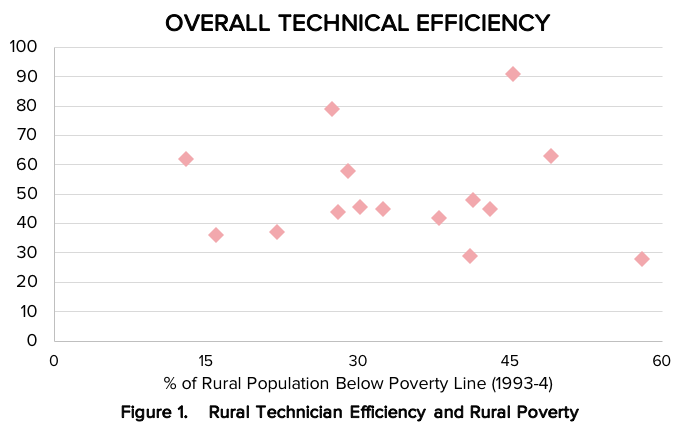TECHNICAL EFFICIENCY AND WELFARE TRADEOFFS
The process of economic development in lower income countries is multi-faceted and involves a number of independent and interrelated factors, ranging from investment, technological change, public policy and institutional change, human capital, natural resource endowments, and geography. Recent research has highlighted the potential role of health as a component of human capital in spearheading the processes of development and augmenting wealth accumulation. We explore whether health may influence economic development through its impacts on technical efficiency in production.
Technical efficiency is a measure of how well the decision-making units use their inputs in generating outputs and represents an interesting way to think about the role of health and human capital more generally in the production process. Our approach conceptualizes health as factors that allow firms to use their physical and financial inputs in a more efficient manner.
In India, almost 60% of its population relies on agriculture to make a living. In recent years, low productivity and lack of efficiency in this sector have concerned many policymakers, especially in the context of increasing global competition. We investigated whether better population health may impact economic performance through improvements in technical efficiency in agricultural production in India. We found that population health is associated with technical efficiency in agricultural production and that the efficiency of labor use persists even after controlling for a set of confounding factors. For example, we found that there were decreases in infant mortality rate associated with statistically significant increases in overall technical efficiency. A good portion of this association is likely due to improvements in the efficiency of labor use. Our study proposes one mechanism to demonstrate health’s positive influence on economic performance, stimulating future work to characterize the links between health and technical efficiency, and economic development more broadly.
